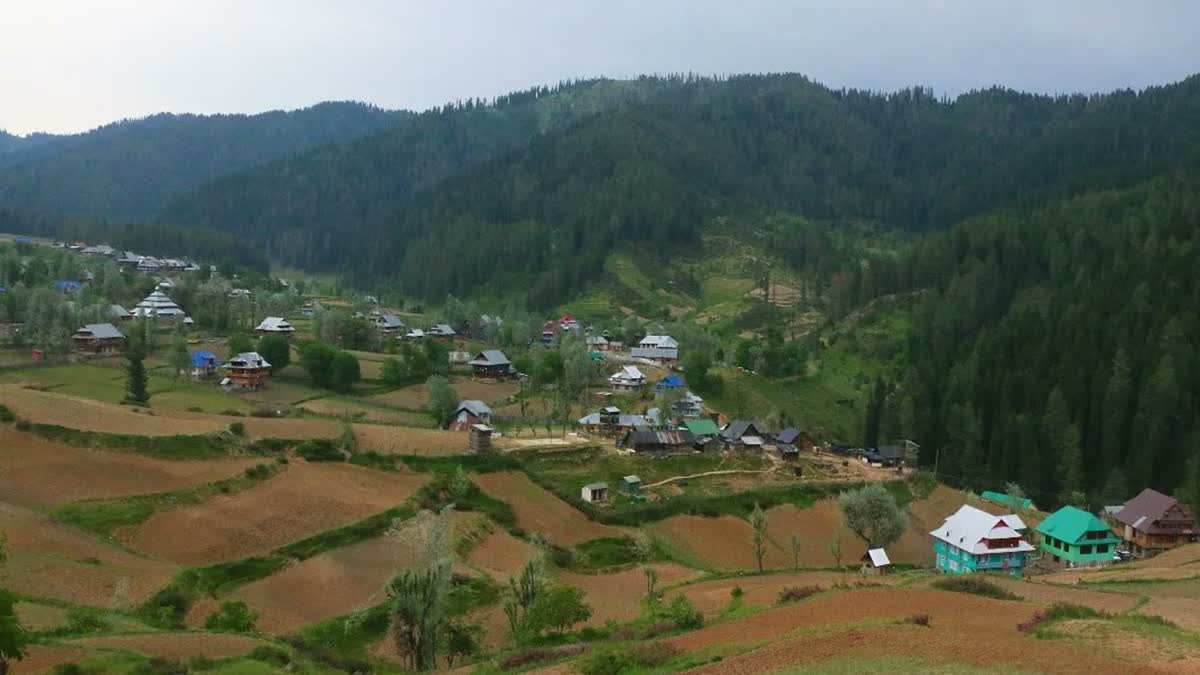Srinagar (Jammu and Kashmir): Local communities in the western Himalayas of Kashmir are leveraging traditional knowledge and wild edible plants to bolster food security and tackle climate change, a study published in Forest Policy and Economics claims.
Researchers Shiekh Marifatul Haq from Ilia State University in Georgia, Aadil Abdullah Khoja from Glocal University in India, Muhammad Waheed from both Ilia State University and the University of Okara in Pakistan, Manzer H. Siddiqui, Saud Alamri, Alanoud T. Alfagham, and Latifah A. AL-Humaid from King Saud University in Saudi Arabia, and Rainer W. Bussmann from Ilia State University and the State Museum of Natural History in Germany, documented how these communities preserve and use a variety of wild plant species traditionally harvested from forests.
"Traditional plant knowledge is integral to the resilience of these communities," Haq said in his paper. "It helps them adapt to environmental changes and ensures food security."
According to the researchers, Many herb species like Palanga, (Capsella bursa-pastoris), Haand (Cichorium intybus), Masnoori (Portulaca oleracea), Lakut-Gull (Plantago lanceolata) and Heand (Taraxcum officinale) which are climate resilient and grow as weeds in the study area. These could additionally become a part of home gardens to overcome food scarcity issues in near future.
The study identified 99 wild edible plant species and nine fungi species utilized by the Pahari, Gujjar, Kashmiri, and Bakarwal ethnic groups. The Pahari used the most plant species, followed by the Gujjar, Kashmiri, and Bakarwal. Tender leaves were the most frequently used plant part for food and medicinal purposes, while tubers were the least used.
Economic stability in Kashmiri communities has led to a preference for market-bought vegetables, reducing reliance on foraging. In contrast, the Gujjar and Pahari, who live closer to forests, actively forage and sell wild foods, enhancing their food security.
"The shift away from traditional foraging is a significant concern," Khoja has highlighted in his research. "There is a pressing need to document and preserve this knowledge before it is lost."
The study highlighted 19 economically valuable and climate-resilient plant species, such as Capsella bursa-pastoris and Taraxacum officinale, which could be integrated into home gardens to mitigate food scarcity. Other species, like Diplazium maximum and Rumex nepalensis, offer medicinal benefits and market value.
"Integrating these resilient plant species into home gardens can play a crucial role in combating food scarcity, especially during harsh winters," Waheed claimed in the study.
Wild vegetables are typically stir-fried or boiled, while wild fruits are consumed raw. Some species, like the stems of Pteridium revolutum, are preserved for winter consumption. Women, who predominantly engage in foraging, hold more knowledge about these plants compared to men.
"Women play a key role in the preservation and transmission of this traditional knowledge, which is vital for the community's food security and cultural heritage," Bussmann has emphasized in his part of the study.
Given the rich species diversity among ethnic groups and the threat to traditional knowledge posed by various factors, the researchers emphasized the importance of documenting these practices.
The study, conducted in Kupwara District, which spans 2,379 square kilometers and includes 368 villages at an altitude of 1,500 meters, underscores the cultural significance of these species and their role in sustaining food security and cultural heritage amidst



